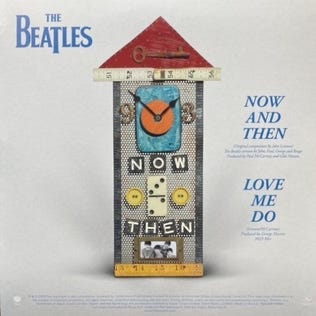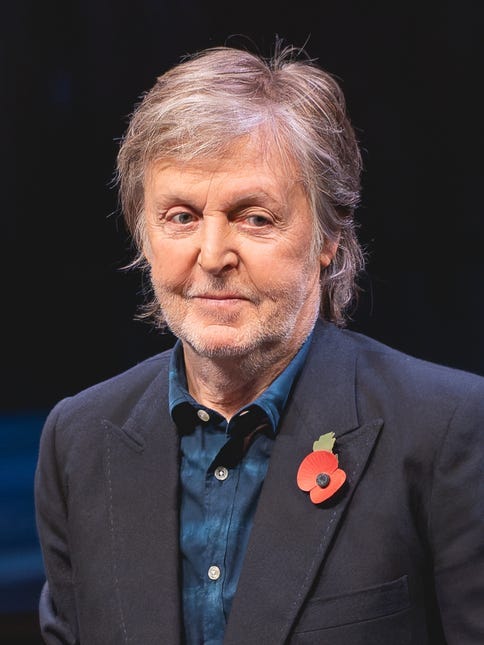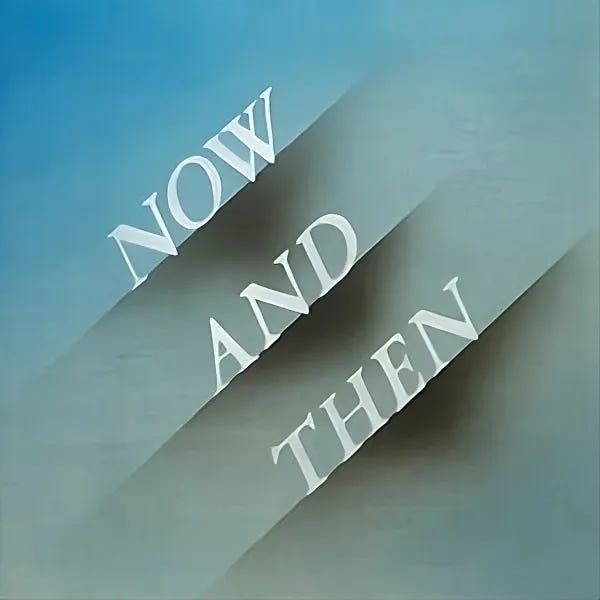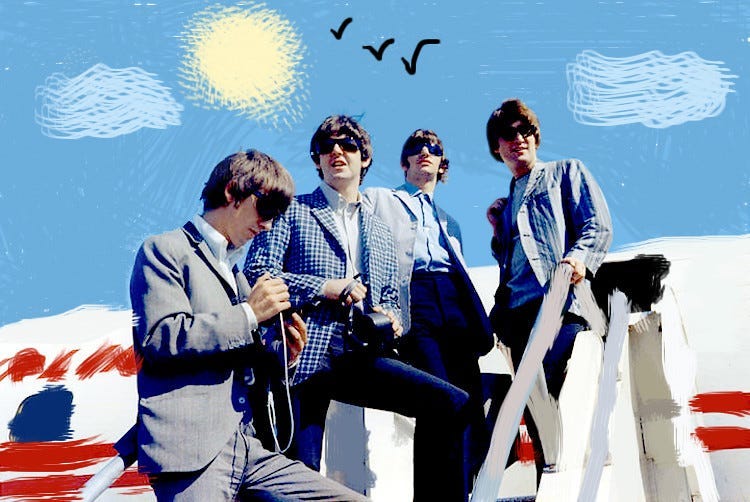The Beatles’ Achilles’ Heel: How “Now and Then” Exposed a Legacy in Limbo
In 2023, technology clashed with tradition, dividing fans over Now and Then — where did it go wrong?
In 2023, Fans groaned, heads in their hands, calling it “the worst song The Beatles ever released.” Others sat silently, overcome by emotion, repeatedly playing the Fab Four’s final original song, Now and Then. Some just sat there, stunned, unsure what to feel.
With such a polarizing reception, as a Beatles-oriented writer, I was fascinated by the divide, which was, in many ways, generational. Two years after its original release in 2023, the final “Beatles” song remains puzzling. Strangely, that’s exactly how it should be.
But why? Was it a confusing misfire, or does its divisiveness reveal more about how culture interacts with music across generations and how we view the Beatles today?
Mother Superior Jumped The Gun
From the start, polar opposite knee-jerk reactions were inevitable — that’s just how it goes. Some Beatles fans would love the song out of blind loyalty, while others would tear it down to be contrarian.
But over the past two years, the unexpected and overwhelming sense of collective disorientation regarding Now and Then caught my attention most, with an unspoken consensus that something feels off. For the most part, the tune hasn’t been dismissed as terrible. And on the other hand, no one is declaring it a masterpiece. The dominant reaction from its initial release still stands: confusion.
The most common sentiment I’ve encountered is: “I like it. The song isn’t bad, but it just doesn’t feel right.” Some chalk it up to the obvious: John and George weren’t part of the process. But it’s not that simple.
Counterintuitively, the reason Now and Then doesn’t feel like a Beatles song isn’t about what’s missing; it’s about what was added, and you won’t find “it” in any other song in their catalog: it’s ear fatigue.
What is ear fatigue, and why does it make Now and Then feel strange? It’s the unfortunate side effect of a song suffering from its dependence on its technology.
The Beatles Achilles’ Heel
What happens when a generation raised on analog, non-pitch-corrected recordings hears a Beatles song with a polished piano, modern bass production, and digitally enhanced drums? What if it also includes sampling and pitch-perfect vocals, all built on a half-rewritten Lennon demo? The result is ear fatigue — an experience where the song becomes subconsciously exhausting to the auditory system.
Baby Boomers, Generation X, and even older Millennials (like myself) weren’t introduced to The Beatles through digital media. When presented with a new Beatles song crafted not only digitally but with AI, it feels unnatural. And before I’m labeled a “boomer” or anti-tech, the ear fatigue isn’t because it wasn’t recorded in pure analog, it’s how the digital production was utilized that wears on the ears.
From a technical standpoint, the track’s “perfection” creates a sonic cognitive dissonance that confuses listeners. After all, Lennon’s original demo of the song was built on pure emotion and simplicity. It was a sketch of everything that should have made it a classic Beatles song, yet it doesn’t fit.
The pitch correction gives the song a rigid quality, something The Beatles avoided at all costs. Yes, digitally cleaning up Lennon’s vocals was needed to “delete” the demo’s 60-cycle hum, but the same tech also became the song’s Achilles' heel.

When pitch correction is applied to any of The Beatles’ voices, it falls flat (pun intended). Aligning each note precisely to a twelve-tone equal temperament grid removes all the emotion from the vocal, making it feel mechanical and lifeless.
Imagine if Lennon’s vocal on Don’t Let Me Down had been altered when he hits the high G#4 in the bridge (“a love that lasts forever”). The raw, imperfect delivery is what gives the moment its emotion. It’s not flawless — nor should it be — because that’s how a human sings. The emotional outcry and imperfections make his voice genuinely connect with us.
The tech-heavy production of Now and Then is that elusive “something” many fans struggle to pinpoint — a feeling that resonates more with older generations but seems to go unnoticed by Gen Z and younger Millennials raised on digital media and modern production. For them, Now and Then sounds exactly as expected; anything else might feel out of place.
But what about the song itself? The real disappointment lies in the recording choices and its promotion.
McCartney’s Insecurities
There’s little doubt that if a slightly less polished piano had accompanied Lennon’s vocals on the record, along with Paul’s current voice instead of the cleverly sampled harmonies from Because and Here, There, and Everywhere — recorded over fifty years ago — the track would have been much more authentic in keeping to the spirit of the fab four, and the demo.
Paul’s reluctance to multitrack harmonies within his current vocal range was partially responsible for the decision to use AI to compile the backing track, a significant misstep in its arrangement. It is nice to hear Harrison’s harmony, but this still could have been accomplished without “AI Paul.”
The overly produced track feels driven by Paul’s insecurities. He didn’t want his aged voice alongside Lennon’s mid-1970s era vocals, but ironically, that contrast would’ve added the human touch and bolstered an even greater sense of sentimentality. Yet, when Ringo and Paul’s current voices take center stage, the heavy pitch correction strips away what makes them unique.

The demo’s pre-chorus was scrapped, which, in hindsight, was probably for the best. However, this left the song feeling structurally incomplete. Instead of relying on their natural ability to elevate a song, turning something mediocre into brilliance as they did in the ’60s, they turned to producer Giles Martin to fill the gaps.
And here lies the generational divide again: the song is missing an entire section Lennon never finished, leaving it incomplete. Yet, for a younger generation raised on formulaic, subpar songwriting, Now and Then still stands head and shoulders above today’s Top 40. However, its music video is a major letdown for all fans.
The Music Video Fiasco
After re-watching the Now and Then music video, which I recalled as fairly clumsy, I realized it’s even worse than I remembered — lazy, poorly executed, and more like a last-minute college project than a serious work of cinematic art. It’s disappointing.
I won’t give the music video a pass or sugarcoat it as “light-hearted fun,” showcasing John’s “silly” side, as many critics have done. Sure, I appreciate celebrating Lennon’s wit and humor. Still, I refuse to roll over and blindly praise a video that fails to honor their legacy in any meaningful or artistic way. Yes, it’s intentionally goofy sometimes, but the production is unintentionally laughable — if not outright unacceptable.
The biggest misstep? While Lennon and Harrison were digitally lifted from Hello, Goodbye, McCartney and Ringo were awkwardly green-screened instead of being filmed together. COVID-era logistics likely played a role, but for the final Beatles music video, was it really too much to have the two surviving members in the same space? The contrast is striking. Somehow, the Strawberry Fields Forever promo released in 1967 feels ahead of its time, while Now and Then already feels like a relic of the past.
The problem is clear: they tried to please everyone and ended up with something already outdated. Aiming for a trendy, YouTube-style production while preserving the Beatles’ charm was a fine idea in theory. But mixing a contemplative 40-year-old Lennon with an 80-year-old McCartney in a frantic collage of every Beatles era crammed into four minutes feels more confused than heartfelt.
As the saying goes, trying to appeal to everyone often means reaching no one.
I’ve Got To Admit It’s Getting Better
Despite its flaws, Now and Then hasn’t damaged the Beatles’ legacy — it only momentarily blurred it. Its haunting melody and unique chord progression set it apart from today’s mainstream music. For younger fans experiencing a new Beatles release for the first — and last — time, it was a genuinely emotional moment.
With a project this monumental, meeting everyone’s expectations was impossible. It’s a reminder of how easily we take their music for granted and how their near-mythical status amplifies every misstep. They took on an almost impossible task and executed it as well as anyone could under the circumstances.
So, setting harsh critiques aside, perhaps Mark Twain said it best: “All of us contain music and truth, but most of us can’t get it out.”
As always, thanks for reading.
-Daniel
Enjoyed this piece? The author has more to share — read the original post on Rock n’Heavy and discover his work here.









Hi, Daniel, thank you for sharing your story with the MusicVerse. You rock!